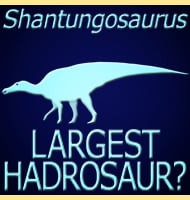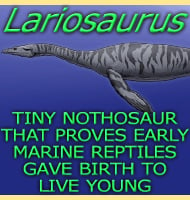Shantungosaurus
In Depth When remains of Shantungosaurus were first found they were found in a bone bed of at least five individual dinosaurs. Though none of these were of a complete skeleton, composites of incorporating the bones of more than one individual have been assembled with the largest producing a hadrosaurid dinosaur just over sixteen and … Read more

